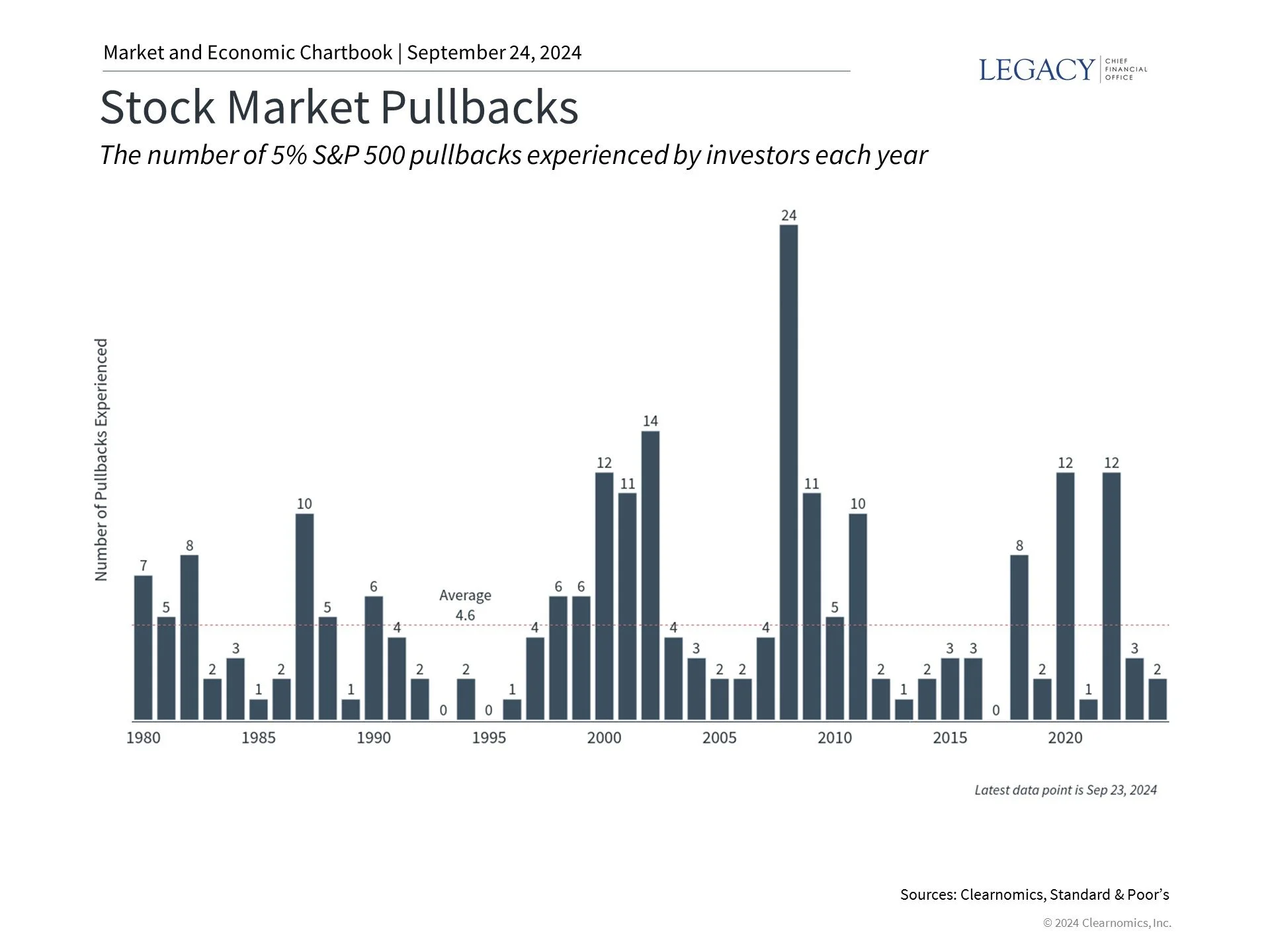How Geopolitical Conflicts Impact Markets and the Economy
The conflict between Israel and Hezbollah has escalated in recent days, raising the risk of a full-scale war and marking another chapter in Middle East instability. These events are unfolding against a backdrop of existing global uncertainty, including the war between Russia and Ukraine, tensions between China and Taiwan, unrest in the South China Sea, disruptions in the Red Sea, and persistent threats from North Korea and Iran. These events are complex, create tragic humanitarian crises, and unfortunately have no simple solutions.
Without minimizing the real-world impact of these conflicts, investors may wonder how they might impact financial markets and the economy. History shows that while geopolitical events can lead to market uncertainty and volatility, their impact on portfolios tends to be short-lived. Markets typically calm as situations evolve and eventually stabilize, leaving broader business cycle trends as the main drivers of performance. Thus, investors should resist making decisions based on headlines and instead focus on their long-term financial goals.
The impact of geopolitical risk depends on broader trends
For long-term investors, geopolitical risk is unavoidable. Headlines on regional and global conflicts can be alarming since they involve violence and the loss of life, and are therefore unlike the typical flow of business and market news involving earnings, valuations, and mergers and acquisitions. These events are also difficult to analyze and their outcomes challenging to predict. This is why, from the perspective of investors, it's always important to separate feelings and beliefs around politics and global matters from portfolio decisions.
History shows that the impact of regional conflicts on markets often depends more on the overall economic climate than on the conflicts themselves. This is clearly seen in the accompanying chart which highlights many of the most impactful geopolitical events over the past few decades. In many cases, markets recovered within a few days or weeks, when they were affected at all.
When markets did struggle for some time, this was largely due to broader market conditions including the dot-com bust during which 9/11 occurred, or the rapid Fed rate hikes in 2022 that coincided with Russia’s invasion of Ukraine. Conversely, most of the conflicts since the 2010s, including wars in the Middle East, the annexation of Crimea by Russia, and the ongoing nuclear threats in North Korea and Iran, were against the backdrop of an expansionary economic cycle. This helped to propel markets forward despite increased uncertainty.
This was also true in the 20th century which experienced strong bull markets despite major global events such as World War II, the Vietnam War, wars in the Middle East, and the Cold War which loomed over much of the second half of the century. This perspective underscores the fact that making investment decisions solely based on geopolitics is not supported by history.
Oil prices can affect the global economy
When short-term disruptions to global markets occur, they tend to be the result of rising oil prices or supply chain disruptions. Issues with oil supply can lead to higher energy prices, potentially impacting inflation and economic growth globally. This occurred most recently when Russia invaded Ukraine in 2022, worsening the inflation situation around the world.
The current situation in the Middle East has led to a slight increase in oil prices, with Brent crude rising from $69 per barrel in early September to around $75 recently. This increase is relatively modest compared to previous spikes seen during other geopolitical crises. In 2022, oil prices rose to nearly $128 per barrel, propelling the average gasoline price in the U.S. to over $5 per gallon, before falling once more.
An important difference between today’s environment and that of the past is that the U.S. is now the largest producer of both oil and gas in the world. Domestic oil production now exceeds 13.3 million barrels per day, more than Saudi Arabia, Russia, and other members of OPEC+. In theory, greater energy independence is one reason the U.S. may be more insulated from global events than in the past, although it still depends on imported oil for a variety of reasons.
It's also possible that the macroeconomic environment was far more sensitive to oil prices earlier this year when investors and the Fed were trying to determine the path of inflation. In that environment, month-to-month changes in oil prices could impact inflation figures, which in turn could affect the path of monetary policy. However, now that inflation has decelerated significantly and the Fed has begun to cut rates, markets may be less sensitive to short-term fluctuations in oil prices.
Investors should always prepare for uncertainty
While investors may feel as if there has been significant market uncertainty this year, the truth is that the stock market has experienced only two 5% or worse pullbacks so far. These occurred in April and August due to worries over the Fed and economic growth. This is well below the historical average and is in the context of the S&P 500 generating a 20.8% year-to-date total return. This highlights the importance of staying invested and not overreacting to headlines, while also being prepared for periods of market volatility.
When it comes to geopolitics, it’s also important to remember that while markets depend on global stability, the rule of law, and business/consumer confidence, they are primarily driven by broader market and business cycle trends. So, although regional conflicts can increase the "risk premium" on financial assets due to increased uncertainty, it's often a mistake to make dramatic shifts in portfolios in response to geopolitical crises.
The bottom line? While the situation in the Middle East is serious and deserves attention, investors should maintain perspective when it comes to their portfolios. It’s important to work with a trusted advisor to construct a portfolio built around long-term financial plans that can handle periods of uncertainty.



